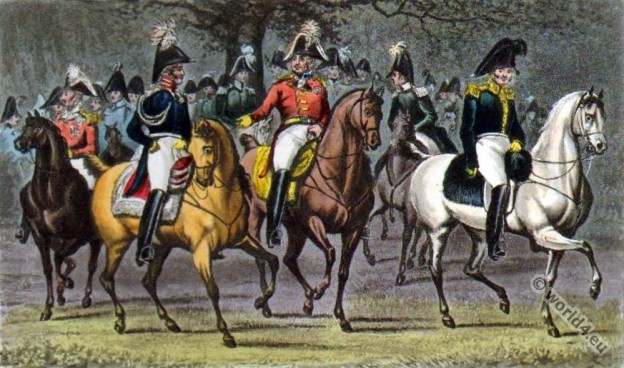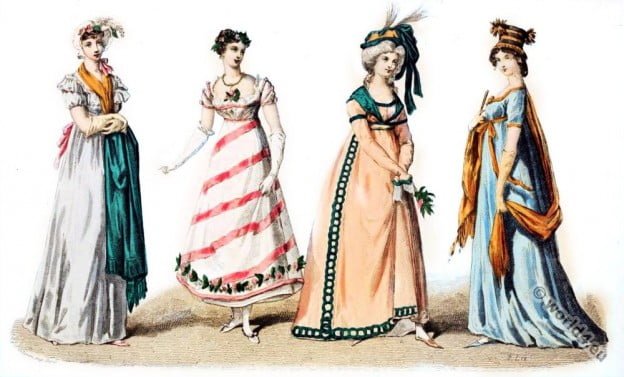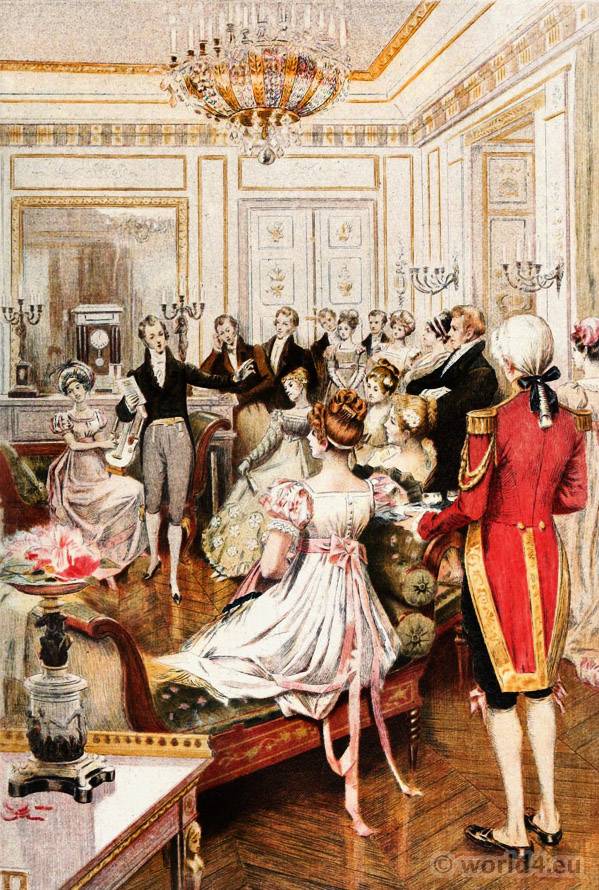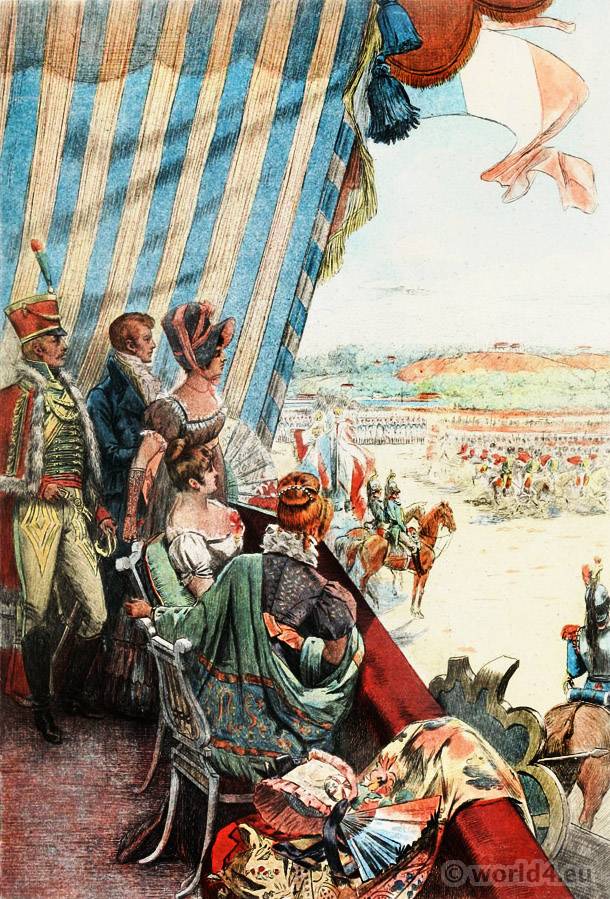Restoration (1814-1830), Romantic period (1830-1848), Second Empire (1852-1870).
Category: 1814
Naples from the castle of St. Elmo. Italian scenery in 1817.
St. Elmo. From this spot the forked top of Vesuvius is perhaps more intelligible than upon a nearer inspection.
Waverley, or, ‘Tis Sixty Years Since is the first novel by Sir Walter Scott.
Waverley appeared in 1814 and is considered the first British historical novel. The materials are Highland feudalism, military bravery, and description of natural scenery.
The allied sovereigns attending a review in Hyde Park, 1814.
The allied sovereigns. The Duke of Wellington. The King of Prussia. Prince Regent (George IV). The Emperor of Russia.
Fashion history. Reign of Napoleon I. 1804 to 1814.
Fashions under the First Empire. Reign of Napoleon I. 1804 to 1814.
Part of the Allies entering Paris after Waterloo 1814.
The Reminiscences and Recollections of Captain Gronow, being anecdotes of the camp, court, clubs and society, 1810-1860.
The King’s Musketeers. A French army of 1814 to 1815.
A French army of 1814 to 1815. The King’s Musketeers. Armee Francaise de 1814 à 1815. Mousquetaires du Roi. After a drawing by F. Bastin. From a series: Armee Francaise… Read More
French first empire modes under the Restoration 1814-1815.
French first empire modes under the Restoration. (Première Restauration 1814-1815) Les Modes sous la Restauration. From the Book: The Frenchwoman of the century; Fashions – Manners – Usages, by Octave Uzanne.… Read More
The Coquettes, Flirts of the First Empire 1804–1814.
The Coquettes, Flirts of the First Empire 1804–1814 (Napoleonic Empire). Les Coquettes du Premier Empire. Les Modes sous la Restauration. From the Book: The Frenchwoman of the century; Fashions –… Read More









